Discover Vienna: Essential Attractions and Insights

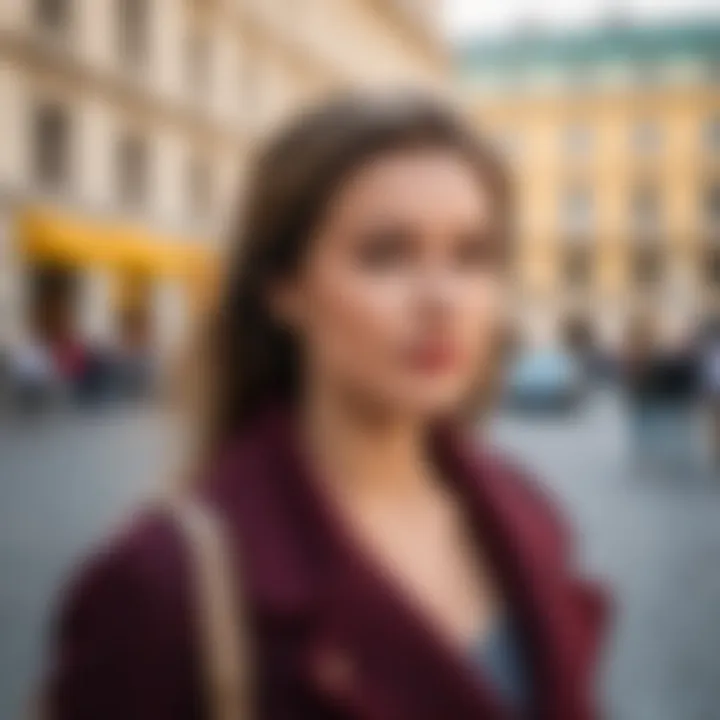
Intro
Vienna, the city where the Waltz was born, is not just a destination but an experience that sweeps visitors off their feet. Nestled along the banks of the Danube, this capital of Austria is a tapestry of history, art, and culinary delights. When one walks its streets, each corner reveals a story; every building boasts its own history. This guide aims to arm travelers with insights into must-visit attractions, the cultural heartbeat of this remarkable city, and practical tips to navigate Vienna like a local.
In this article, expect to uncover the allure of Vienna's historical landmarks, such as the regal Schönbrunn Palace and the historic St. Stephen's Cathedral. Just as importantly, we’ll explore hidden gems and local traditions that often go unnoticed by tourists. Special emphasis will be placed on the interactive experience of Viennese cuisine and the practices that contribute to its rich and diverse culture.
This journey through Vienna isn't only limited to the sights. It encompasses the sound of a Viennese coffee house, the serene parks perfect for families, and vibrant neighborhoods filled with art and expression. Whether you are a seasoned traveler or taking your first steps into the world of travel, Vienna holds something for everyone.
With tips to prepare, such as itinerary planning and packing strategies, it’s time to delve deeper into what makes Vienna a must-see on any travel list.
Prologue to Vienna
Vienna, Austria's majestic capital, is a city where history and modernity dance together in an intricate waltz. This section serves as the doorway to understanding why Vienna remains a treasure trove for travelers from all corners of the globe. Every corner of this grand city exudes charm, inviting exploration and discovery. By delving into Vienna's unique essence, visitors can uncover not just sights but the very soul of this cultural haven.
Historical Overview
Vienna's history is as layered as a rich strudel; each bite reveals more. Established as a Roman frontier town known as Vindobona, Vienna has evolved over centuries, shaped by dynasties, revolutions, and wars. The Habsburgs, a powerful royal line, infused the city with grandeur, turning it into a political and cultural nucleus of Europe. Notably, landmarks like the impressive Hofburg Palace and St. Stephen's Cathedral tell tales of its imperial past, offering visitors a glimpse into the opulence enjoyed by its former rulers.
But shaping history isn't merely a tale of glorious palaces. The city bore witness to momentous events such as the Congress of Vienna in 1814, which helped reshape Europe after the Napoleonic Wars. These moments don't just fill textbooks—they are detailed footprints on the city’s pavement that visitors can trace. Exploring the historical avenues leads one to realize that Vienna isn't static; it's a vibrant tapestry that continues to unfold.
Cultural Significance
Vienna's cultural significance extends beyond its visually stunning architecture and historical landmarks. It serves as a vibrant stage for music, art, and philosophy. Renowned composers like Mozart and Beethoven strolled its streets, leaving melodic echoes in the air that still resonate today. The Vienna State Opera is one of the world’s leading opera houses, showcasing a rich program that captures the city's musical heartbeat.
Moreover, art and ideas flow through Vienna's veins. The city attracted intellectual giants like Sigmund Freud and Ludwig Wittgenstein, who transformed societal perceptions and philosophical paradigms. Today, the MuseumsQuartier stands as a testament to this legacy, housing contemporary exhibitions alongside classic works—a perfect blend of old and new.
In short, Vienna isn't just a place to visit; it’s a canvas colored with centuries of creativity and contemplation. Travelers who venture into this city do not just learn about history; they engage with it, making every moment spent here an opportunity for deeper appreciation of human achievement.
"To know a city, one must experience its history, engage with its culture, and savor its moments."
With its myriad attractions, Vienna beckons eager explorers to lose themselves within its historical narrative and vibrant culture. As we journey through the subsequent sections, readers will find practical advice and personal insights to guide their exploration, ensuring a fulfilling experience in this enchanting capital.
Architectural Landmarks
Architectural landmarks in Vienna are not just buildings; they are vibrant expressions of the city's storied history and rich cultural tapestry. Each brick and stone tells a tale, weaving through time to educate and enchant visitors. From Gothic cathedrals that soar into the sky to baroque palaces that whisper of imperial grandeur, these structures stand as proud sentinels of a bygone era. They offer insights into the prevailing art movements and societal shifts that shaped Vienna over centuries, making them essential stops for any traveler keen to grasp the essence of this magnificent city.
St. Stephen's Cathedral
History of the Cathedral
St. Stephen's Cathedral, or Stephansdom as locals call it, has been at the spiritual heart of Vienna since its inception in the 12th century. This edifice reflects not just the religious fervor of the time but also the evolution of architectural styles through various renovations and expansions. The significance of the cathedral cannot be overstated; it has witnessed pivotal moments in Austrian history, including coronations, weddings, and funerals of notable leaders. The unique characteristic of its Romanesque and Gothic styles gives it a breathtaking silhouette. A visit here provides a sense of continuity through tumultuous eras, illustrating how faith and culture are intertwined.
Architectural Features
The architectural features of St. Stephen's Cathedral are a captivating mix of different styles that merge into one harmonious design. The most striking aspect is its towering spire, which reaches nearly 137 meters high, making it a dominant fixture in the Vienna skyline. The mosaic roof tiles in vibrant colors form a stunning geometric pattern, often drawing the attention of passersby. It's popular among both locals and tourists due to its unique blend of styles and the intricate craftsmanship seen throughout. However, one should note the challenge of navigating its narrow passageways during peak tourist seasons.
Visiting Tips
When planning a visit to this magnificent site, consider timing your trip to avoid crowds. Early mornings or late afternoons offer a quieter experience, allowing for a more contemplative visit. Note that guided tours are available, providing deeper insights into the cathedral's history and architecture. Another tip: make sure to take the climb up the south tower. The panoramic views of Vienna are well worth the 343 steps, granting an unforgettable perspective of the city. However, be prepared for a workout!
The Hofburg Palace
Historical Context
The Hofburg Palace, once the imperial palace of the Habsburg dynasty, is a treasure trove of historical significance. This sprawling complex showcases the evolving political landscape of Austria, having served as the residence for numerous emperors throughout the centuries. The sheer size of the palace is imposing, symbolizing the power and prestige of the Austro-Hungarian Empire. It’s not only about the architecture; it’s about understanding the tapestry of history that unfolded within its walls. For visitors, this represents an opportunity to delve into the vast political history of Austria in a place that feels alive with stories.
Key Attractions within the Palace
Among the numerous sections of the Hofburg, the Imperial Apartments remain a highlight. These rooms are furnished with original pieces from the Habsburg era, offering a glimpse into the opulent lifestyles of the emperors and their families. Furthermore, the Sisi Museum highlights the life of Empress Elisabeth, also known as Sisi, who has become a cultural icon in Austria. These attractions not only showcase the palace's grandeur but are also deeply appealing due to the rich personal stories they tell. Keep in mind, however, that tickets for specific areas can sell out quickly.
Guided Tours
For anyone seeking a more in-depth experience at the Hofburg Palace, guided tours are highly recommended. They provide context and detail that self-guided visits might overlook. Trained guides weave tales of power, romance, and intrigue that add layers to the architectural magnificence. It's a chance to connect with the past in a meaningful way. Still, large tour groups may sometimes lead to a crowded experience, so opting for smaller groups can make for a more personalized visit.
Belvedere Palace
Art Collections
Belvedere Palace, a UNESCO World Heritage site, is renowned not only for its mesmerizing architecture but also for its extraordinary art collections. Home to masterpieces like Gustav Klimt’s "The Kiss," the palace stands as a beacon of Austrian art. The collection spans centuries, showcasing not just Klimt but also Egon Schiele and Oskar Kokoschka, making it a must for art enthusiasts. The unique feature of this location is the picturesque setting alongside beautiful gardens, merging art with nature seamlessly. However, with such fame, it's wise to book tickets in advance to avoid long wait times.
Gardens and Surroundings
The gardens of Belvedere Palace are as much a part of the experience as the art inside. With terraced landscaping, exquisite fountains, and well-maintained flower beds, it's an idyllic spot for a leisurely stroll. Here, visitors can bask in the tranquility while enjoying stunning views of the palace itself. This aspect elevates the visit, offering a moment of relaxation amid a packed itinerary. However, with fluctuating weather conditions in Vienna, checking forecasts before planning a visit might save you from an unexpected downpour.
Visiting Information
For those planning a visit, it is essential to check the opera and exhibition schedules beforehand as they can influence opening hours. Guided tours are available, which are particularly beneficial for first-time visitors. For independent explorers, audio guides offer flexibility while providing informative content. Additionally, consider setting aside a good chunk of time for your visit; rushing through this cultural gem will dampen the experience. Plan intelligently to fully appreciate what Belvedere Palace has to offer.
Cultural Experiences
Vienna is a city where culture whispers tales of its past and present in every street corner and building. The cultural experiences available here are not just events; they are the pulse of the city. From grand performances at renowned opera houses to the day-to-day interactions at beloved coffee spots, these aspects weave the vibrant tapestry of Vienna’s identity. By immersing oneself in these cultural offerings, visitors can gain deeper insights into the city's soul. In this guide, we will explore three areas of cultural experiences that vividly represent Vienna: the majestic Vienna State Opera, the lively MuseumsQuartier, and the rich café culture that has flourished for centuries.
Vienna State Opera
History of the Opera House
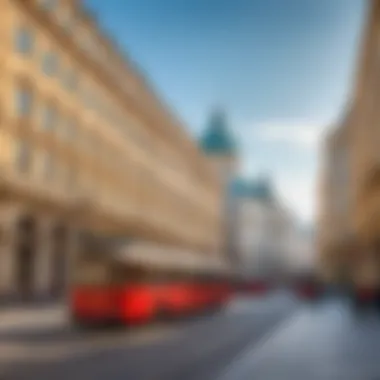
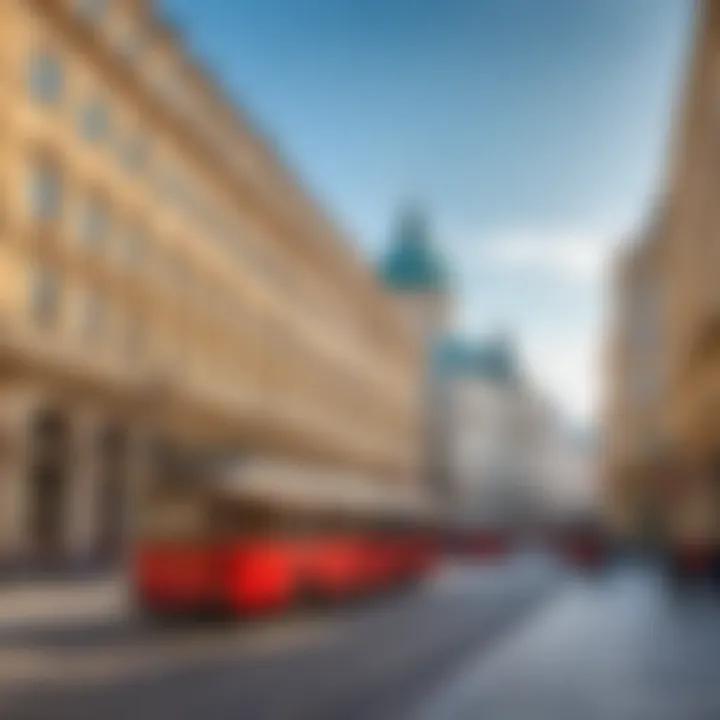
The Vienna State Opera has a history steeped in artistic brilliance. Established in the mid-19th century, it has been the stage for many legendary performances. Its grand architecture and rich acoustic ambiance create an undeniable allure. A notable characteristic of this opera house is its resilience; having been severely damaged during the Second World War, it was swiftly rebuilt, symbolizing the enduring spirit of Vienna’s artistic community. This makes it a compelling choice for visitors wanting to engage with Vienna’s storied past while indulging in world-class performances.
The unique feature of the State Opera is perhaps its dual role. It’s not simply a building; it’s a cultural institution where stories unfold through music and performance, allowing patrons to experience the melding of art and history firsthand. The only downside might be the ticket prices; however, the experience is often deemed priceless.
Notable Performances
When it comes to notable performances, the Vienna State Opera has had its fair share of memorable moments. Renowned for staging works by composers like Mozart, Verdi, and Wagner, the performances are often accompanied by some of the world’s finest orchestras and soloists. This key characteristic makes the opera house a hotspot for both locals and tourists alike. Attending a performance here isn’t just about the music; it’s about being part of a shared experience.
A unique quality of these performances is the tradition of 'standing room' tickets, which are more affordable, allowing everyone a chance to be part of this cultural experience. Still, competition for these tickets can be fierce, so planning ahead is essential.
Booking Information
Booking information for performances at the Vienna State Opera can be straightforward but requires some foresight. Tickets can be purchased through their official website, where detailed schedules and seat options are provided. A notable feature is the availability of last-minute tickets, which can sometimes be a steal, though it's a gamble due to high demand.
In terms of advantages, many venues offer discounts for certain groups, such as students or seniors. However, one disadvantage may be the potential for confusion with overlapping schedules or sold-out performances, underscoring the importance of checking regularly.
MuseumsQuartier
Major Museums
At the heart of Vienna's artistic scene lies the MuseumsQuartier, a hub packed with major museums that showcase diverse artistic expressions. Museums like the Leopold Museum and the Museum of Modern Art (mumok) are essential pillars of this creative landscape. A key characteristic is the blending of contemporary and historical art, making both novices and enthusiasts feel welcomed.
The advantage of visiting these museums is the variety of exhibitions that cater to different tastes, ranging from modern art to classic Austrian pieces. Nevertheless, one downside is that visitors can sometimes feel overwhelmed by the sheer volume of artistic offerings; thus, some prior research can enrich the experience significantly.
Artistic Events
Artistic events at the MuseumsQuartier often draw large crowds. They host a myriad of happenings from interactive installations to open-air concerts, appealing to a wide array of interests. This makes the area a dynamic choice for experiencing Vienna’s cultural pulse firsthand.
A unique feature of these events is the blend of local and international talent, showcasing the city’s commitment to fostering creativity. However, the popularity of these events can lead to overcrowding, which might dilute the experience for some.
Visiting Recommendations
When it comes to visiting MuseumsQuartier, timing your visit is crucial. Early or late weekday afternoons are often less crowded, providing a better viewing experience. The area also hosts many food spots and cafes, allowing visitors to replenish their energy between exhibits.
One key recommendation is to check for special events or guided tours, which can provide deeper insight into the art on display. While there's no entry fee for some outdoor spaces, expect to pay for museum admissions, which may be a disadvantage for budget travelers.
Café Culture
Famous Cafés
Vienna's café culture is legendary and plays a pivotal role in the city's social fabric. Establishments like Café Central and Café Sacher each boast rich histories and stand as a testament to the city's coffee tradition. These famous cafés offer more than just coffee; they serve as social hubs where locals meet to converse, read, or simply unwind.
The distinctive ambiance of these cafés—think grand chandeliers and art-covered walls—invites guests to linger longer. They’re not only good for a quick cup but perfect for a leisurely afternoon. One downside is that the popularity of some cafés can lead to wait times, particularly during peak tourist seasons.
Culinary Traditions
Culinary traditions connected to Viennese cafés go beyond coffee. Local specialties like Apfelstrudel and Sachertorte complete the experience, embodying a sweet side of this vibrant culture. This deep relation between gastronomy and café life entices visitors to savor something truly local.
A key benefit lies in the variety of these culinary offerings, catering to both traditional and modern palettes. However, tourists should manage expectations regarding prices, as some famous cafés may charge premium rates.
Local Coffee Specialties
Local coffee specialties in Vienna include the famous Melange, a local twist on the cappuccino. Each café has its own take on these traditional beverages, adding to the city's rich coffee culture. This characteristic transforms each visit into a unique tasting adventure.
One perk is that many cafés offer sampling options, allowing patrons to explore different varieties without breaking the bank. A factor to keep in mind, however, is that the coffee culture in Vienna leans toward slow enjoyment, which might differ from quicker coffee trends elsewhere.
"Vienna's café culture is an art form in itself, where it's not just about the coffee but the experience of togetherness."
Historical Sites
Understanding the historical sites of Vienna plays a crucial role in appreciating the city’s heritage and its evolution over the years. From solemn museums that house poignant exhibitions to memorials that evoke deep reflection, these sites offer a glimpse into the past that shapes Vienna's cultural landscape. Visitors not only engage with important narratives but also encounter the tangible legacies of those who came before them.
The Jewish Museum
Exhibitions
The exhibitions at the Jewish Museum serve as an enlightening journey into the Jewish community’s rich history in Austria. They showcase artifacts, photographs, and documents that tell stories of resilience and cultural expression. One notable characteristic of these exhibitions is their ability to connect historical events with personal narratives, making the experience deeply resonant.
Among unique features is the special rotating exhibition that highlights contemporary Jewish art and current societal challenges. This can be both captivating and thought-provoking, offering an advantage by fostering a holistic understanding of Jewish culture against the backdrop of history.
Historical Context
Diving into the historical context presented at the Museum reveals the layers of Jewish life that have influenced Vienna over centuries. This aspect draws attention to key periods, particularly before World War II, significantly shaping both Jewish and Viennese identities. A notable element here is how the museum contextualizes its exhibitions within broader European histories, making it an insightful choice for those wishing to grasp how intertwined histories can be.
A unique element is its focus on lesser-known stories, which can sometimes be overshadowed by more prominent narratives. This can either enlighten or overwhelm, depending on the visitor's familiarity with the material.
Visitor Information
Visiting the Jewish Museum is straightforward, with clear information readily available for tourists. The museum offers guided tours which can enrich one’s experience with expert anecdotes and detailed explanations, ensuring that the historical significance isn't lost amidst the artifacts.
Another practical characteristic is its position in the city, located in the heart of the first district, which makes it easily accessible. However, during peak seasons, the crowds can detract from the intimate experience one might seek when exploring. Overall, the museum is a beneficial stop for anyone interested in the diverse fabric of Vienna's historical population.
Memorials and Commemorations
Significant Memorial Sites
Significant memorial sites scattered across Vienna provide poignant reminders of the city’s past, particularly regarding the Holocaust. Each site tells a story, revealing the layers of history’s weight. A key characteristic of these memorials is their ability to evoke emotional responses from visitors, creating spaces for reflection and remembrance.
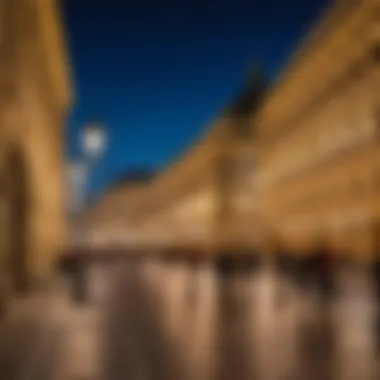
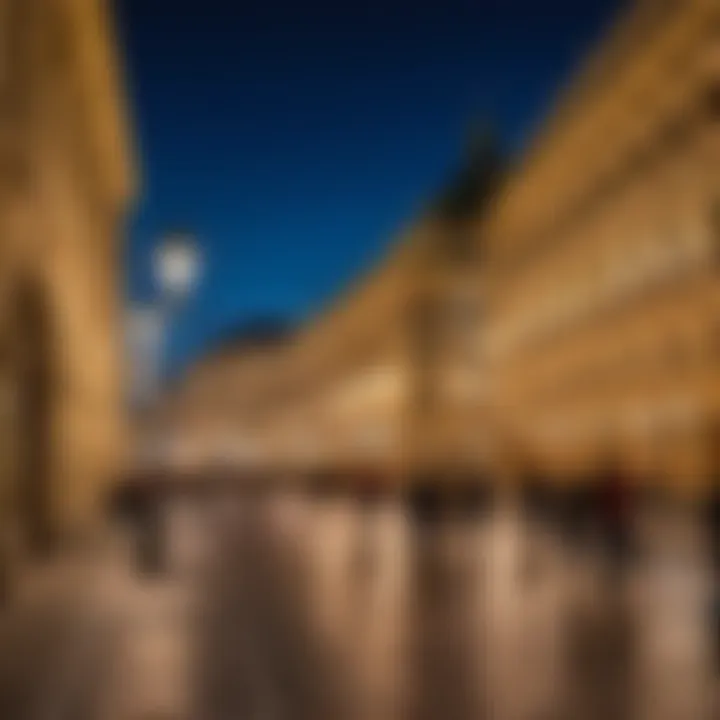
The uniqueness of these sites lies in how they integrate into the urban landscape. They can emerge subtly within bustling neighborhoods, serving as sanctuaries for thought amidst the city's vibrancy. However, some may feel a sense of discomfort when confronting such heavy history, yet this discomfort can also lead to meaningful dialogue.
Reflection on History
The reflection on history that these memorials provide is invaluable. It encourages visitors to ponder not just the events but their implications on contemporary society and collective memory. The resonance of these reflections lies in how they compel one to consider the actions of the past and their relevance today.
A distinctive aspect of these memorials is their usage in educational contexts, where guided visits are organized for schools and groups to foster understanding of history's impact. This can lead to a richer comprehension for younger generations but may also be met with varying levels of engagement based on personal connections to the subject matter.
Tour Options
Various tour options are available to explore these memorials and commemorative sites, guiding visitors through the key landmarks of Vienna’s darker history. Walking tours, in particular, provide a personal touch, allowing participants to absorb the surroundings while hearing about the events and lives that have shaped them.
A notable feature of these tours is the flexibility they offer – from highly detailed historical accounts to more general overviews, catering to different interests and emotional readiness. However, it is important to choose tours that provide respectful and ethically sound narratives, as some may commercialize sensitive histories, which can be disheartening.
As you walk through Vienna, remember that every stone and street corner carries whispered stories of the past. Allow these historical sites to guide your understanding, painting a vivid picture of a city that has seen both the heights and depths of human experience.
Natural Attractions
When one thinks of Vienna, grand palaces and historical museums often come to mind, but the city is also blessed with natural gems that offer a respite from the bustling urban life. The natural attractions in Vienna, such as Prater Park and the Vienna Woods, provide not just scenic beauty but also recreational areas where one can unwind, enjoy outdoor activities, or simply take a stroll. These green spaces are vital in offering visitors an authentic flavor of what the natural side of the city can provide, harmonizing perfectly with its rich cultural heritage.
Prater Park
Recreational Activities
Prater Park is a sprawling green space that’s much more than just a pretty face; it's a juxtaposition of nature and entertainment. It boasts an array of recreational activities suitable for families, couples, and solo adventurers alike. Notably, the park features various walking and biking trails that make it easy to explore the area at your own pace. Additionally, one can't miss the iconic Giant Ferris Wheel, which provides a panoramic view of the city and proves to be a crowd favorite.
The sheer variety of activities—from picnicking to paddle boating—ensures that there’s something for everyone. Unquestionably, its accessibility makes Prater a beneficial and popular choice for both locals and tourists. The mix of nature and leisure adds a unique flavor to the Vienna experience.
Historical Background
Delving into the historical background of Prater Park offers insight into how this natural wonder transformed over the years. Originally a hunting ground for the king in the 16th century, it evolved into a public park in the mid-19th century, opening its doors to everyday citizens. This change marked a significant point in history where the natural surroundings were made available for everyone, not just the elite, making it a key attraction in Vienna's social landscape.
The park’s heritage is a unique feature that continues to draw visitors. Despite the modern additions, remnants of its past can still be seen, blending history with recreation seamlessly.
Accessibility
Accessibility is a paramount consideration for any tourist attraction, and Prater Park shines in this regard. Located just a train ride away from the city center, getting to the park is quite straightforward. The area is well-connected by the U-Bahn, tram lines, and even cycling paths, ensuring visitors can reach it without a hitch.
Moreover, the wide, paved paths within the park cater to those with limited mobility, making it inclusive for everyone. In short, Prater Park is an easily accessible treasure, allowing travelers to enjoy its benefits without the complications.
Vienna Woods
Trails and Hikes
The Vienna Woods are another natural attraction that can’t be overlooked. The extensive trails and hiking paths offer exploration opportunities for nature lovers and fitness enthusiasts. Walking or hiking through these lush surroundings brings one closer to nature, often revealing hidden spots and breathtaking views of the city from above.
The trails' accessibility and range in difficulty levels make them a popular choice for both experienced hikers and novices. Unique features like themed trails that highlight flora or historical landmarks only add to the charm. Visiting the Vienna Woods is more than a recreational activity; it’s a way to connect with the natural world away from the urban hustle, leaving visitors feeling refreshed.
Flora and Fauna
One of the most delightful aspects of the Vienna Woods is its rich flora and fauna. The diverse ecosystem features native plants, trees, and wildlife, making it a prime spot for eco-enthusiasts and bird watchers alike. Here, one might spot various species that thrive in this habitat, offering photographers and nature lovers ample opportunity for exploration and study.
The variety of flora also provides seasonal spectacles, with colorful blooms in the spring and golden foliage in the fall. This dynamic aspect makes the Vienna Woods a worthy destination year-round, bringing a distinct charm depending on the season.
Guided Tours
If you prefer a more structured approach, guided tours in the Vienna Woods can enrich your experience significantly. Professional guides often share intriguing insights about the area’s history, ecosystems, and anecdotes that you might otherwise miss. This structured exploration can be particularly beneficial for newcomers who may not be familiar with the local lore.
Guided tours often cater to various interests, from hiking-focused to more leisurely nature walks, making them a flexible option for visitors. However, always confirm details like availability in advance, as the popularity of these tours can lead to high demand, especially during peak tourist seasons.
"The natural attractions of Vienna offer a refreshing escape into beauty and tranquility, enhancing the overall allure of this captivating city."
In summary, Vienna’s natural attractions are an essential part of its identity. From the vibrant activities in Prater Park to the serene hikes in the Vienna Woods, these natural spaces invite everyone to discover a different side of the city, balancing the energy of urban life with peaceful surroundings.
Local Cuisine
Vienna's culinary landscape serves as a vital chapter in the story of its identity, reflecting the city’s cultural tapestry and history. The local cuisine not only fills the stomach but also provides an insight into the soul of the city. For travelers, engaging with Vienna's food scene is essential, allowing them to experience flavors that have been influenced by various traditions and communities over centuries. From quaint cafés to bustling markets, Viennese food offers an array of tastes that cater to diverse palates.
Traditional Dishes
Wiener Schnitzel
Wiener Schnitzel stands as a hallmark of Austrian cuisine, and it's hard to pin down a dish that is more iconic. It consists of a breaded and fried veal cutlet, crispy on the outside and tender within. Its popularity stems from its simplicity as well as its rich flavor. Many believe that enjoying this dish is not just a meal but rather a rite of passage for anyone visiting Vienna.
One of the dish’s unique features is how it is traditionally served with a wedge of lemon and a side of potato salad or lingonberry sauce – these accompaniments elevate the dish, creating a balance of flavors that is refreshing and indulgent. However, it’s worth noting that not all variations of Wiener Schnitzel come from veal; some establishments might offer chicken or pork versions. While these alternatives can be tasty, they don’t quite capture the essence of the original.
Tafelspitz
Moving on to Tafelspitz, this dish is a tender boiled beef that is traditionally served with a flavorful broth, often garnished with vegetables. Delving into Tafelspitz is like exploring the heart of Viennese home cooking. Its comforting and hearty nature makes it a popular choice among locals, especially during colder months.
What sets Tafelspitz apart is the way it's prepared; the slow cooking process allows the beef to become incredibly tender and full of flavor. Typically, it’s paired with a selection of sauces like apple or horseradish to provide a punchy contrast to the meat’s richness. This dish provides visitors with not just a meal, but a taste of the history and traditions of Viennese culture, encouraging a deeper appreciation of local culinary techniques.
Sweets and Desserts
Sweets and desserts are another crucial aspect of Viennese cuisine that requires exploration. Think of offerings like the Sachertorte, a decadent chocolate cake layered with apricot jam. Local pastries reflect the city's love for sweetness, showcasing a marriage of textures and flavors.
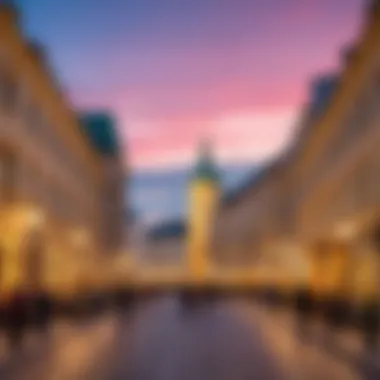
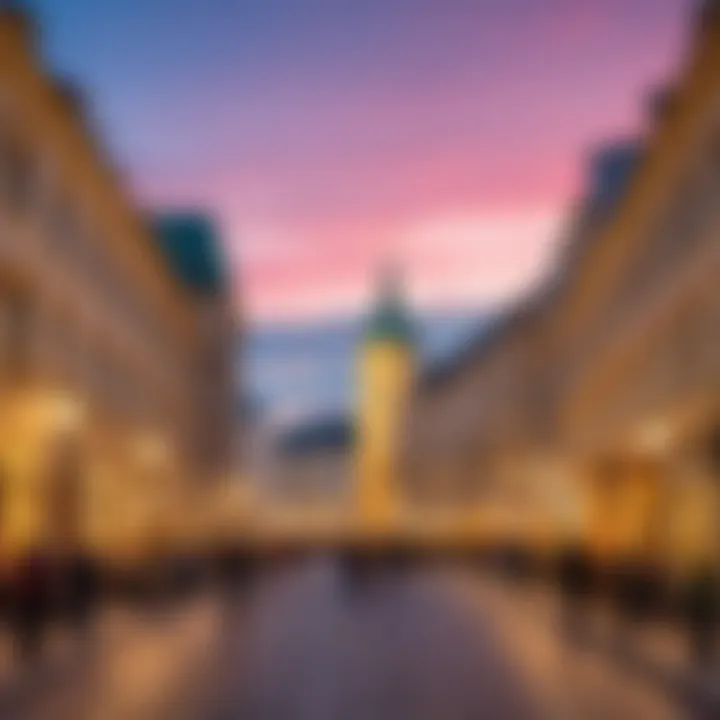
What makes desserts particularly special in Vienna is the cultural experiences tied to them. Numerous cafés pride themselves on their unique takes, making a visit to these spots utterly essential. However, one must not forget the rich calories involved, as indulgence here often comes with a price. It’s not just a treat; it’s an experience worth savoring and sharing.
Food Markets
Naschmarkt Overview
One cannot truly experience Vienna without stepping into the vibrant Naschmarkt. This food market is a feast for the senses, offering a plethora of local and international delicacies. The market is not only known for its colorful stalls filled with fresh produce, cheese, and baked goods, but also for the lively atmosphere that encapsulates the spirit of Vienna.
The unique feature of Naschmarkt lies in its melting pot of cultures—here, you can find everything from authentic Viennese dishes to Middle Eastern specialties. Navigating through the stalls, visitors can engage with local vendors, learn about the ingredients, and perhaps even pick up a few recipes along the way. This market is much more than just a shopping destination; it’s a window into the culinary diversity of the city.
Sampling Local Delicacies
Sampling local delicacies at various spots, whether in restaurants or at street stalls, enhances the travel experience significantly. With each bite, travelers are able to forge a connection with Vienna’s rich herbal compote of flavors.
What stands out about sampling is the ability to try multiple dishes without the commitment of a full meal. It allows for an exploration of tastes, textures, and ideas about what makes Viennese cuisine special. Such explorative tasting can lead to unexpected favorites while also enriching one’s understanding of the local food culture, paving the way for engaging conversations with locals.
Culinary Tours
Joining a culinary tour can be an enlightening way to delve into the food scene of Vienna. These organized excursions often provide a narrative to the experience, blending food with stories about the city's history and culture. Participants are guided through lesser-known eateries and hidden gems, as well as traditional establishments, each with something unique to offer.
It’s a journey where food acts as a conduit for understanding the city’s culture more deeply. The blend of local expertise and authentic terroir enhances appreciation; however, costs can vary widely based on the length and inclusiveness of the tour, making it important for travelers to choose wisely to align with their budget.
In Vienna, food is more than nourishment. It’s a way of life, a heritage, and a bridge connecting the past to the present.
Practical Tips for Visitors
Taking a trip to Vienna isn’t just about the spectacular sights and the sounds of its grand orchestra. It’s also about knowing how to navigate the city smoothly and making the most of your time there. Practical tips for visitors can greatly enhance the overall experience, ensuring you don’t miss much and aren’t bogged down by unnecessary stress. This section prepares you for those ins and outs that can make your trip more enjoyable.
Best Times to Visit
Vienna dances to the rhythm of the seasons, and knowing when to visit can mean the difference between a bustling holiday and a quiet retreat. Spring (March to May) is particularly lovely, with gardens blooming and temperatures comfortable. If you enjoy festivals, November and December bring magical Christmas markets that adorn the streets. That said, summer (June to August) brings in the tourists, but with it, plenty of cultural events, making it a vibrant time to visit, despite the heat. Each season has something unique to offer, and understanding this seasonal dance can help you select the best month for your adventures.
Transportation Options
When exploring Vienna, getting around comfortably is key. The city boasts a reliable and efficient public transport system, along with other modes to ease your journey.
Public Transport System
Vienna's public transport system is like a well-tuned orchestra, providing a fabulous means of traversing the city. With a blend of trams, buses, and the underground Metro, you can easily navigate from one attraction to the next. Key characteristic: affordability and speed. A single ticket can take you pretty much anywhere in the city without breaking the bank. You should consider purchasing a Vienna Card, which offers unlimited travel for 72 hours along with discounts at many attractions.
Unique feature: The trams are not just transportation; they provide a delightful view of the city life as they glide along the streets. One downside – during rush hour, it can get as packed as a tin of sardines. Yet, this organized hustle gives you a taste of real Viennese life.
Biking Opportunities
For those who prefer the open air, Vienna is very bike-friendly. There’s something refreshing about pedaling along the Danube Canal or through the historic districts. Key characteristic: well-organized bike paths and rental options can be found practically everywhere. The city’s bike-sharing system is popular among locals and visitors alike, making it an easy choice to hop on a bike and explore with a gentle breeze in your hair.
Unique feature: With expansive parks like the Prater, the biking experience becomes much more than just transportation. Although the lack of dedicated bike lanes in some areas can pose a challenge, the overall network is commendable, making it a viable option for the adventurous spirit.
Walking Tours
Walking tours in Vienna can feel like stepping into the pages of a rich history book. Key characteristic: intimate exposure to the iconic sites, such as St. Stephen’s Cathedral or the Ringstrasse. The advantage of walking is simple; you can stop, explore, and truly immerse yourself in the surroundings. Your senses will be delighted as you pass cafés and small boutiques nestled along the streets.
Unique feature: Many local companies offer themed walking tours, whether it’s art, culture, food, or a blend of everything. However, these excursions can be time-consuming, so for those pressed for time who want a concise overview, a bike or tram ride might be a smarter choice.
Accommodation Recommendations
Finding the right place to rest your head can set the stage for your entire stay in Vienna. Whether you’re looking for a taste of luxury, budget-friendly options, or something truly distinctive, the options are varied.
Luxury Hotels
Stay like royalty in Vienna's stunning luxury hotels. From historic palaces to modern five-star stays, the city's luxury accommodations offer unparalleled service and elegance. Key characteristic: luxurious amenities and prime locations. A superb hotel can greatly enhance your experience, creating a perfect base for your city exploration.
Unique feature: Many luxury hotels boast historic architecture while providing modern comfort. However, this luxury often comes at a hefty price, so it's essential to discern between what’s a necessity and what’s a luxury.
Budget Options
Traveling doesn’t have to break the bank. Vienna teems with budget-friendly accommodations without sacrificing comfort. Key characteristic: hostels and guesthouses offer a cozy atmosphere with opportunities to meet fellow travelers. This makes it easier to share stories and tips.
Unique feature: Many budget options provide kitchen facilities, allowing you to whip up your own meals. Just keep in mind, staying on the outskirts of the city might save you some cash but potentially cost you extra travel time.
Unique Stays
For the adventurous at heart, Vienna also offers unique accommodation options. Think boutique hotels in repurposed buildings, or stays that provide a thematic twist—such as art-inspired hotels or quirky guesthouses. Key characteristic: memorable experiences that go beyond traditional hospitality.
Unique feature: Staying in a unique location often grants you a local feel and a great story to tell. However, these options vary widely in price, and knowing what to prioritize for your stay can help ensure you find the right fit.
"Vienna invites not just visits but a deeper connection, blossoming between its visitor and the city."
When planning a trip, these practical tips can navigate the complexities of Vienna, allowing you to soak in its beauty with ease.
Closure
In wrapping up our exploration of Vienna, it becomes clear that this city is much more than a mere destination—it’s a tapestry woven from rich history, exceptional culture, and stunning architecture that each visitor has the chance to enjoy. The final reflections on visiting Vienna are vital for anyone contemplating a trip to this historical hub. Through structured guidance and vivid insights into its attractions, the article aims to enhance the traveler’s experience and understanding of the city.
Final Thoughts on Visiting Vienna
Vienna's allure lies in its ability to bridge the past and present seamlessly. Walking through the streets, one can feel echoes of history reverberating, while the bustling art scene pulsates with contemporary expression. Here are key considerations for your visit:
- Plan Wisely: The timing of your visit can significantly shape your experiences. Consider visiting during shoulder seasons, like spring or autumn, when crowds are smaller but the weather is still pleasant.
- Embrace the Culture: Don’t miss out on experiencing local traditions—be it a classical concert at the Vienna State Opera or simply enjoying a coffee at a traditional café.
- Utilize Local Resources: Vienna is well-connected by a reliable public transport system. Getting a Vienna City Card can provide discounts and easy access to many attractions, making your trips smooth and cost-effective.
- Indulge Your Taste Buds: The culinary scene is as diverse as the city itself. From the iconic Wiener Schnitzel to local sweets, feasting on authentic Viennese food should not be overlooked.
"Vienna is a city that welcomes you with open arms and leaves you with memories that linger long after your departure."
Lastly, don't rush. Take the time to appreciate the small details—the intricate architectures, the serene parks, and the vibrant street performances. Each corner of this city hides a story, and each moment spent here deepens your understanding of Vienna in ways a guidebook cannot articulate. Engaging with the local culture, history, and cuisine will inevitably transform a simple trip into a memorable journey—one that stays with you for years to come.







